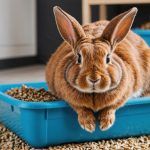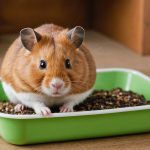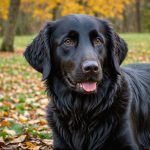Understanding Bloodhound Scent Tracking Abilities
Bloodhounds are renowned for their impressive tracking abilities, which are closely tied to their unique canine olfaction prowess. These remarkable dogs have the ability to discriminate scents with a precision that is unparalleled in the animal kingdom.
At the heart of a bloodhound’s tracking abilities are its highly developed olfactory receptors. These dogs possess around 300 million scent receptors, significantly more than most other dog breeds. This dense concentration of receptors enhances their ability to detect and follow scents over great distances and through complex environments. Their long ears and loose skin also serve practical functions, sweeping up scents from the ground and funneling them toward their powerful noses.
Have you seen this : Smart strategies for maintaining a healthy diet for your senior rottweiler and curbing obesity
Compared to other scent-tracking breeds, bloodhounds stand out for their ability to follow a single human scent trail over several days and miles. Breeds such as beagles and German shepherds, while efficient trackers, lack the same level of scent discrimination exhibited by bloodhounds. This expertise makes them invaluable in search and rescue operations and criminal investigations.
The bloodhound’s heritage and physiological traits combine to create a canine with unparalleled scent detection skills. Understanding these abilities highlights their unique position among scent-tracking breeds and underscores their enduring value to humans.
Effective Training Techniques for Bloodhounds
Training bloodhounds involves a variety of targeted techniques that tap into their exceptional scent-tracking abilities. Foundational exercises are crucial, starting with tracking exercises that introduce these skilled dogs to the complexities of scent trails. By gradually exposing them to diverse scents in controlled settings, these exercises lay the groundwork for more advanced scent games.
Positive reinforcement plays a pivotal role in this process. Consistently rewarding bloodhounds when they successfully follow a scent not only builds their confidence but also strengthens the desired behavior. This method emphasizes the positive outcome of their actions, encouraging them to repeat and refine their tracking skills.
As the bloodhound progresses, it is essential to gradually increase the difficulty of the tracking tasks. This can involve introducing longer and more complicated scent trails, using tracking exercises that mimic real-world scenarios. Implement different terrains, from dense forests to open grasslands, or add layers of distractions such as other animal scents or mild weather changes to simulate a more authentic environment.
Finally, incorporating a variety of scent games into their routine can make training sessions enjoyable for bloodhounds while developing their versatility in scent recognition. Adjusting the complexity based on their performance ensures they continue to grow and face new challenges without overwhelming them.
Specific Exercises to Enhance Scent Tracking
Training bloodhounds to excel in scent tracking involves a series of meticulously designed exercises. These activities not only refine their abilities but also equip them to tackle real-world challenges effectively.
Scent Discrimination Drills
Scent discrimination is pivotal for bloodhounds in search and rescue missions. The primary benefit is honing the ability to distinguish specific human scents among various distractions. To implement scent discrimination exercises, start with pairing different scent items and utilize positive reinforcement as the dog correctly identifies the target scent. The timing and frequency for these exercises should be regular to ensure consistent improvement, ideally several times a week. This structured routine boosts reliability and confidence in challenging scenarios.
Tracking with Human Scents
Utilizing scent trails effectively capitalises on a bloodhound’s incredible olfactory senses. Begin with simple scent trails and gradually increase complexity to enhance tracking abilities. Variability in scent trails, like crossing paths or using different terrain types, stimulates problem-solving and adaptability. Techniques to track lost persons or objects include using articles recently touched by the individual and lengthening the distance over time to boost proficiency.
Environmental Challenges
To prepare bloodhounds for diverse environments, practice sessions must incorporate varied terrains. Whether on rugged paths or through urban areas, each terrain presents unique scent characteristics. Tracking in different weather conditions, such as rain or snow, teaches adaptability and resilience. By addressing these challenges, bloodhounds become well-rounded trackers ready for any situation.
Behavioral Management in Search and Rescue
Managing canine behavior in search and rescue operations is crucial for success. To understand a bloodhound’s motivation, one must delve into their incredible olfactory abilities and tenacious drive. These dogs work tirelessly due to a strong instinct to follow scents, making them invaluable in tracking tasks.
Working Dog Psychology and Focus
Training a bloodhound demands an appreciation of working dog psychology. It involves fostering a keen focus while minimizing distractions. Trainers often engage their natural prey drive, using paired scents and rewarding through positive reinforcement to maintain bloodhound focus. This strategy is effective in keeping the bloodhound interested and engaged over long operations, ensuring they do not wander off-task.
Addressing Behavioral Issues
Certain behaviors may emerge under high-stress conditions. Common issues include over-excitement or anxiety, leading to a loss of concentration. Addressing these requires consistent, calm training environments where the bloodhound can learn to operate despite stressful stimuli. Methods such as desensitisation and creating a calm working space can significantly help in rectifying these challenges.
Employing a focused approach, alongside understanding canine behavior management, ensures bloodhounds remain efficient search and rescue partners. With the right techniques, these skilled animals can consistently perform at their best, aiding those in need.
Success Stories and Case Studies
In the realm of search and rescue, few tools are as effective as bloodhounds for tracking and finding missing persons. Renowned for their exceptional scent capabilities, bloodhounds have successfully located individuals across varied terrains and challenging conditions.
A notable case includes a bloodhound’s pivotal role in finding a lost child in dense woodland. The bloodhound efficiently traced the child’s scent over several miles, showcasing the technique of scent trailing. In this instance, precision and recall were unparalleled, as the accurate scent detection led to a successful recovery.
Handlers often emphasize the importance of understanding each bloodhound’s unique abilities and the vital role of environmental factors in scent detection. In an interview, a handler explained, “Building a strong bond and mutual trust between handler and bloodhound are essential for effective operations.” This insight reveals that success in challenging search and rescue missions doesn’t solely rely on the bloodhound’s ability, but also on the handler’s expertise and refined techniques.
Incorporating real-world applications of bloodhounds in search missions not only underlines their value but also continually improves search and rescue methodologies, adapting to the evolving needs of complex scenarios. As illustrated in these success stories, bloodhounds continue to excel, impressing both their handlers and the communities they assist.
Recommended Equipment for Scent Tracking
Before embarking on scent tracking missions, having the proper bloodhound tracking equipment is crucial. Essential items like harnesses and GPS collars not only enhance a bloodhound’s tracking capabilities but also ensure their safety during operations. Harnesses with a comfortable fit allow for steady control, while GPS collars provide real-time location tracking, crucial during extended searches in unknown territories.
For scent training gear, consider scalable items like scent-specific containers and training vests. These products are designed to simulate real search scenarios, ensuring efficiency during actual missions. Some of these tools are tailored specifically for search and rescue operations, such as scent discrimination articles, which help dogs differentiate between various scents in chaotic environments.
Maintaining your search and rescue tools ensures their longevity and the consistent performance essential for urgent missions. Routine checks, cleaning, and proper storage are vital. For harnesses, regular checks for wear and tear will prevent unexpected failures in the field. GPS systems should always be charged and backup batteries kept on hand to prevent any disruption during crucial search phases. By selecting and caring for your tracking equipment wisely, success and safety in scent tracking missions are all but guaranteed.
The Science Behind Canine Olfaction and Scent Training
Understanding the scientific principles of canine olfaction reveals how dogs’ extraordinary sense of smell can be harnessed effectively. Dogs have up to 300 million olfactory receptors in their noses, compared to about 5 million in humans. This vast difference explains their superior scent detection abilities. When discussing breeds like bloodhounds, their enhanced scent capabilities are attributed to the unique physiology of their noses, which optimises airflow and scent particle capture.
Scent training methods have evolved considerably, as advancements in research provide more insight into dogs’ perception of smells. Modern techniques utilise incremental exposure and varied scent challenges to condition dogs more effectively. These methods harness dogs’ innate scent tracking aptitude and refine it, tailoring training to each dog’s specific capabilities and needs.
Bloodhound puppies showcase the fascinating role of scent memory right from an early age. Their exceptional trailing ability is heightened by scent memory, which is established during initial scent exposures. This memory allows bloodhounds to track continuously, using scent markers imprinted in their minds. Training enhances this natural skill, increasing their tracking efficiency. By leveraging scent memory and training, handlers can optimise the effectiveness of bloodhound scent tracking in various contexts, including search-and-rescue operations.










